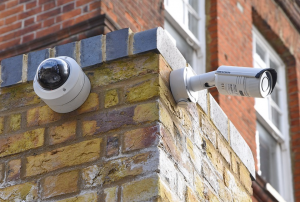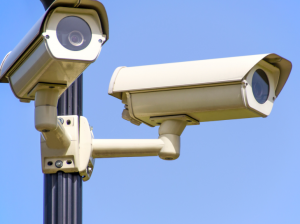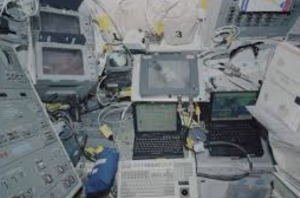This seems like an old story that is already advised: a system whose old technologies have updated to electronic, therefore introducing vulnerabilities at a crucial atmosphere. And while this development is more reminiscent of technical programs, it’s also that of security networks, especially CCTV.
1. FROM TAPE TO IP SURVEILLANCE
Closed-circuit TeleVision (CCTV ) systems fulfill the demand for tracking and management of their physical perimeter. Historically earmarked for its most sensitive sites, they’ve been democratized and are currently a part of the metropolitan landscape.
The previous systems comprised of analog cameras and also have been attached to tape recorders (videotape ). They were wholly distinct and belonged only to the area of safety. Though they weren’t in the time worried by computer security problems, most systems now rely upon IP networks, including Linux kernels and Windows computers.
Once the advent of digital video, closed-circuit surveillance systems (CCTV) have accommodated and slowly embarked on more intellect (movement detection, alarm reporting, etc.). They also have connected with other encircling systems to allow more exact heuristics or value-added features like identifying individuals.

2. TECHNOLOGICAL DEVELOPMENTS THAT INTRODUCE NEW RISKS
The company protocols and community infrastructures utilized are designed primarily on the grounds of security and environmental security constraints and don’t consist of high IT security conditions. Additionally, the usage of TCP / IP to pool or even other systems, the CCTV could be a stage of rebound into other critical systems, like the fire security system. They are also able to be linked to the Web to have the ability to administer and take care of the equipment, with no related risks being accepted into consideration during the plan.
CCTV is a lovely community for a possible attacker. The surveillance abilities of the cameras and also their implantation at the center or perimeter of a site may bring new dangers. This system, actually disconnected from the remainder of the planet, is appealing enough to be the goal of the attacker.
In some instances, CCTV is subject to high accessibility requirements. Also, it can be interesting for a person to wish to earn the surveillance system inoperative.
Additionally, the data circulating in those systems may be confidential. Fraudulent access to these may recover sensitive data, for espionage functions or as an element of a large-scale assault. As an instance, CCTV may be utilized to permit the shoulder browsing or construction plans of a structure.
An attacker wanting to damage especially to an individual or a business might also by methods of interception and alteration of the stream, acquire information and consequently put pressure on its own goal. As an instance, documents in the personal domain names have been utilized (blackmailsocial media stress ) and also have shown that the beauty of the sort of assault.
The equipment within a remote monitoring system may also function as an intrusion vector. In reality, that the interconnection of these systems can allow it to be feasible, by rebounds, to get other safety systems that are tough to achieve, like the fire security system, which is deemed critical. The application instances are, as an instance, the significance of events involving safety systems, or inter-system control. Therefore a CCTV system might be controlled using a fire security system, to steer a camera onto a place beneath fire detection. At length, the CCTV can be frequently linked to the office system. By way of instance, alarms may be transmitted to servers (e-mails, SNMP traps…),
Sometimes, they might be considered essential data systems (VINs) over the meaning of this Military Programming Act (MPA) . They inherit the attributes of those sites they track (such as tracking of atomic sites) or even the networks where they interconnect (such as interconnection using an essential industrial community ).
Additionally, keeping safety ( patching protection against aggressive codes, journal inspection…) is seldom asked or completed, causing a substantial drift of their safety level as time passes.
Additionally, CCTV has to be deemed as a weak link in cybersecurity: it is essential that its dangers are taken into consideration in the design phase.
3. FEATURES, EQUIPMENT & PROTOCOLS: THE COMPONENTS OF THE CCTV

3.1 CAMERA
The vital element of this surveillance system is the camera system. It may be fixed or cellular ( Pan Tilt Zoom ), digital or analog, picture from the visible spectrum or infrared.
Analog cameras deliver a streaming stream to your host, whereas the IP camera (also referred to as system camera), outfitted with a whole system stack, has innovative features such as the automated assortment of sending strings (after the discovery of a motion such as ).
The firmware is usually on embedded Linux, outfitted with options like BusyBox or Dropbear for remote management, in addition to distinct binaries for camera attributes. The camera also has multiple chances to link with it, to get streams and ship orders (SSH, Telnet, etc.), thereby multiplying detectors and vulnerable protocols.
3.2 INTERMEDIATE COMPONENTS
The most critical application for interacting with the camera is known as the VMS ( Video Management System ). Among other items, it permits you to collect movie streams, listing them and see them.
Besides the VMS, additional video stream processing elements might be found, including appliances, physical or virtual machines. Technological growth makes their differentiation increasingly harder. We typically find:
– ADC ( Analog to Digital Converter ): it transforms an analog video stream to your virtual video stream;
– Video Encoder: it permits to port analog cameras using an IP system and provides many functionalities when compared with some straightforward ADC (chance to relay the PTZ broadcasts, pooling of leaks, etc.);
– DVR ( Digital Video Recorder ): Its function is to capture video streams from digital or analog cameras on hard disks (generally up to a max of 64 connections);
– NVS ( Network Video Server ): in precisely the identical manner since the NVR, it addresses the record of IP streams. Nonetheless, it isn’t set up using a VMS; it’s all up to the consumer to put in it. This Is Generally a Timeless computer;
– NVR ( Network Video Recorder ): it addresses the record of streams coming from IP cameras. Inside this appliance, there’s a VMS, which makes it possible for the backup and management of cameras, also guarantees that the sending of video streams for numerous customers in addition to the aggregation of multiple streams through screen matrix works.
The diagram (Figure 1) shows five distinct topologies of a video projection system employing the equipment described previously. Every one of these topologies could be self-sustaining in the event of little CCTV infrastructures.
Figure 1
3.3 SUPERVISOR AND HYPERVISOR
Supervision and supervision permit the aggregation of their safety systems (CCTV, Access Control, Fire Safety) of the infrastructure. These are frequently quite costly heavy customers put on real machines.
The video surveillance system is more most frequently merely a subset of the safety system. Every one of these subsystems is managed along with also utilizes dedicated intermediate processing gear (ACS, alert clock, etc.). The supervisor is the application layer for aggregating all of the gear, to be able to federate the processing processes as well as the screen on a pc. It makes it feasible to prepare inter-system company logic by copying the information coming from many subsystems, like to point out a camera in a doorway that opens.
The supervisor can also be an application layer, which lets you control and aggregate the supervisors. In training, there’s a supervisor by zone and kind of site (primary site and deported sites supplying the same purpose in a specific area ), along with a supervisor in the higher management level, which makes it feasible to focus at the same point info from various supervisors.
Due to the interdependencies connected to electronics, there’s a high amount of porosity inside the security networks. All these interconnections are a substantial risk, mainly when a few of the gear is at an uncontrolled area, like CCTV cameras or IP intercoms, that might, for example, be found beyond the protected area of the construction. Site.
Regardless of the attempts made to standardize gear protocols and APIs, the constituents of a video surveillance system are many and utilize many different technologies that are frequently obsolete. These networks confront an issue of significant disparity in the amount of safety between the gear that writes them as well as a deficiency of information systems safety culture by people who employ them. The mixture of those variables multiplies the vulnerabilities to which such networks are exposed.
3.4 OPERATING STATIONS

The working stations allow seeing videos broadcast or stored in real time. It may be a supervisor, a supervisor or even a dedicated channel with a hefty customer or maybe (he subsequently employs the web interface of some other device).
3.5 STORAGE
Due to the massive volume of information created by the cameras, it’s occasionally essential to utilize storage servers (e.g., NAS) that are subsequently on the CCTV system.
3.6 PROTOCOLS
To be able to standardize communications involving IP-based security goods, Open Network Video Interface Forum (ONVIF ), a nonprofit company, has distinguished itself. It intends to set up a global standard for communications involving safety devices like video control systems, network cameras and Access Control Systems (ACS). This typical now makes it feasible to work collectively and in concert those various goods, whatever the producer. ONVIF also signifies by extension each of the protocols standardized using the business.
Among the major protocols abbreviated by ONVIF is that the Actual Time Streaming Protocol (RTSP). It helps the camera to command its sound and video streaming purposes by sending commands and also supplying service access authentication. It’s a signaling protocol, even on the TCP port 554. It doesn’t transfer the information; it’s feasible to set up, after an optional authentication (normally login/password), a vent and a session number, that is employed by Real-Time Transport Protocol (RTP) to transfer the press stream. The discussion assortment of the RTP interface isn’t predictable, making it hard to configure virtually some other filtering gear systematically.
The key commands are:
– SETUP: requests the waiter for those resources required to set the connection (discussion of vents, etc.);
– PLAY: asks the host to transmit the information in RTP stream Based on the parameters of SETUP;
– RECORD: how the customer starts the listing following the specified parameters;
– PAUSE: momentary end of this RTP stream;
– TEARDOWN: Spectacular ending of the RTSP session.
RTP may be combined with some Real-time Transfer Control Protocol, which makes it possible for the opinions of mistakes or attributes linked to the station throughput. This communication protocol simplifies constraints associated with making in real time, particularly the joys of this video stream. It’s utilized, as standard, in the unicast mode for voice over IP or streaming (video, sound ) services in UDP.
It may be utilized in multicast mode, yet this configuration has to be based on the routers between the camera and also its customers.
The next picture shows the RTSP session discussion.
Figure 2
Because this protocol is unencrypted, the traditional strikes can be envisioned: interception of this session identifier, sending commands ( TEARDOWN or even PAUSE such as to quit sending out the stream), on-the-fly rewrite of their URLs and interface numbers RTP for shooting or changing the flow.
Additionally, ONVIF simplifies the usage of web services to get and ship Pan Tilt Zoom controls (Pan, Tilt, Zoom). These commands control the natural motion of cameras throughout the network.
Regardless of the attempts made to standardize gear protocols and APIs, the constituents of a video protection system are many and utilize many different technologies that are frequently obsolete. These networks confront an issue of significant disparity in the amount of safety between the gear that writes them as well as a deficiency of information systems safety culture by people who employ them. The mixture of those variables multiplies the vulnerabilities to which such networks are exposed.
4. ARCHITECTURE
CCTV networks inherently involve a vast array of gear and installation surroundings. But if there are a stable substance and ecological contrast one of the gear, the electronic facet stays unchanged and introduces points of weakness of cybersecurity.
4.1 DESCRIPTION OF A Normal INSTALLATION
Standard setup is made up of the principal site connected to some couple remote locations. The objective of the structure would be to pay all areas in danger of this site (whether it’s inside or beyond the region to be protected).
In the core of the principal site is a supervisor to concentrate data from all deployed safety systems. Most safety leaks arise or are destined to this specific particular gear. That’s why he is quite appealing for an attacker. Along with collecting information about safety systems, it can function as a backbone into the office system or to a government LAN.
The supervisor is connected to the intermediate processing gear of this movie stream, they linked:
– additional intermediate gear: that allows the creation of focus factors, frequently characterized by the Introduction of geographical surveillance zones;
– two cameras: making it feasible to aggregate the flows of a business.
Each intermediate gear is situated at a surveillance perimeter zone (parking, road, warehouse, spanning stage, etc.). It permits to aggregate flows following the geographic branch of the site. That is precisely the reason precisely the reason it’s normal to join these devices collectively. This clinic enables fractal cutting into classes and sub-areas.
The cameras have been put on site in line with the areas to be detected. These spaces might be out the restricted perimeter (i.e., exterior, outside the entrance control zone). They’re primarily electronic and over-IP. When this isn’t the situation (for important installation reasons), then IP-to-IP boxes have been all utilized. Consequently, they’re accessible and expose that the components they’re linked into, to an external attacker. The latter may then, with a stepladder and a screwdriver, then connect to the CCTV system, via the Ethernet cable and start its assault.
The positioning of area gear is the end consequence of a reflection about the safety problems of a site, the consequent network routines are occasionally disorderly and connection factors accessible from the exterior.
Figure 3
4.2 A NETWORK DIAGRAM THAT RELIES ON PHYSICAL DISTRIBUTION
The design of a video surveillance system comprises entirely different entrance points and gear that may embark old technology. Figure 4 shows that the system setup caused by the physical structure previously suggested. It displays the probable connections to additional components (brown dashed arrow) correctly. Additionally, the hyperlink to some supervisor forcing many sites is symbolized. This sort of link is present for large jobs but isn’t prevalent in traditional infrastructures.
Figure 4
4.3 INTERCONNECTIONS
We could compare the systems of safety systems (such as CCTV) together using all the Control and Data Acquisition Systems (SCADA). In reality, the apparatus that makeup they often include vulnerable implementations of network applications and company applications. These systems and the networks that interconnect them have for a long time been physically different from industrial and office networks. From today on, they are frequently connected with new IS. All these interconnections are such as significance, information acquisition, and management-administration functions. They’ve become mandatory for the appropriate operation of the safety system. Therefore, the CCTV is going to have the ability to send alarms by SNMP traps to supervisors situated in the workplace side, send emails via SMTP gateways, let Remote Desktop access. All these interconnections are usually not too secure, with good bridges double sided in which CCTV gear to be traded together with the office system has Ethernet cards attached to it.
4.4 THE Issue OF DEPORTED SITES
Often distant from the primary site, deported sites don’t have the same security limitations and usually have less powerful apparatus. They’re also much less subject to fiscal favors compared to the principal places. The installed hardware is generally confined to some cameras and access controllers, or just a supervisor whose upkeep patterns are lightened.
These apparatus are still linked to the remainder of the CCTV system, generally without filtering, which makes them sensitive by a computer security perspective. Access to this community of this remote site enables entry to the overall CCTV network. In spite of physical factors, where a distant location is generally of less significance, it could be crucial from a cybersecurity viewpoint.
By way of instance, to track access to your protected site, cameras could be set up within a metropolitan setting. The road is subsequently regarded as a deported site. These cameras have been put on masts, where there’s an Ethernet cable attached to an NVR or a turn, placed at a specific box specializing in the distant site. The connection with the primary site is going to be offered to utilize a fiber, enabling interconnection into the fundamental supervisor. The camera and the NVR are subsequently free points of entrance to the community.
5. ACTORS
Even though CCTVs are systems with higher cybersecurity challenges, so it’s very crucial to recognize who at the stakeholder series is best capable of formalizing and checking the compliance of related needs and best practices. As for most infrastructures, five celebrities could be identified: the customer, the primary contractor, the integrator, the care supervisor and the owner.
The proprietor, generally the general way of an organization or the person who owns the construction, is that the one that, after a hazard evaluation, controls the CCTV system also possesses it. It might come with a Project Management Assistance for your definition of their requirement and limitations, including safety.
The prime contractor would be your safety specialist who will react to the customer’s requirements using a turnkey solution. He understands and masters the problems and laws about the installation of CCTV. It’s responsible for taking into consideration the needs of the job owner to draft the specifications also, among other items, define the setup regions of the system. In the contractual connection with his subcontractors imposes on these computer safety limitations, ordered or not from the customer. It comes in the layout to the delivery of this system.
The integrator offerings and pros the CCTV hardware and technology that are going to be set up. He’s also responsible for installing and deploying the system. Its computer safety issues are usually those levied from the specifications.
The service supplier in control of the upkeep will backfire on the system in case of a problem after this one approved in the close of the recipe. He’s also accountable for his maintenance. Specifically, it is going to deploy software patches and updates, if those are given in the care specifications. Additionally, it may impose remote care limitations, including a connection of this CCTV using the exterior. They were often not attentive to pc security but worried regarding the operational access to this system.
The operator may be the proprietor or a supplier. It’s he that will utilize the CCTV daily. He’s usually not trained or overburdened in computer safety. Its function will be to exploit on the CCTV (watch the pictures supplied from the drapes ) and perhaps intervene in the area in the event of an alarm. His principal concern is that the operational access to this system, frequently to the use of personal safety.
6. RECOMMENDATIONS
Cybersecurity has to be incorporated during the lifecycle of safety jobs, from design to maintenance and operation. Because of this, it’s necessary that the project owner and the prime builder are attentive to the cybersecurity dangers about the CCTV. It’s through their governments that all stakeholders will contract understanding of hazards and decent security practices.
At the design stage, safety plans for CCTV derive from the idea of all both risk-limited architectures, in addition to the selection of protected configurations and equipment. Concerning shape and design, these rules could be applied:
– Cloisoning of all CCTV systems vis-à-vis Different networks;
– Control system connection points, such as by hardening gear configurations (MAC Locking, 802.1X authentication with certifications, MACsec, etc.) to shield against conventional attacks;
– Zoning and inner segregation of all CCTV networks, particularly between external and internal places. By Way of Example, It’s Suggested that a firewall has been set facing every degree aggregating flows from reduced levels, to restrict traffic to the leaks anticipated from those lower amounts;
– The safe configuration of apparatus, together using deactivation of new functions, switch of default passwords, update of the firmware in the right time of these recipes.
Safe structure and configuration will cut the dangers that will have to be preserved throughout the maintenance period. Though the application of stains can be complicated, the equilibrium, the small evolving character of CCTV systems are especially acceptable for the discovery of episodes, such as weak signs: tendencies networks, change ports passing up / down. The fast taking into consideration those events could be accompanied by uncertainties increased by evaluation of the CCTV records.
CONCLUSION
CCTV systems, like SCADA, are very hybrid systems. They include the best of 2 worlds that hadn’t crossed. These technological cross-fertilizations produce new dangers that have to be controlled. It’s all up to people, celebrities of security and cybersecurity, to commence the measures to get a convergence of comprehension. Only after that can we introduce cybersecurity within an intrinsic part of safety system design.
